#hotel supplies
Explore tagged Tumblr posts
Text
Premium Hotel Supplies | Luxury Amenities by Kimirica
Discover high-quality hotel supplies at Kimirica, your trusted partner for premium toiletries, bath amenities, and luxury essentials. Elevate your guests' experience with sustainable, skin-friendly products designed for hotels, resorts, and hospitality businesses. Shop now!
2 notes
·
View notes
Text
Everything You Need to Know About Hotel Supplies
The hospitality industry thrives on its guests' comfort, satisfaction, and experiences. One often overlooked yet essential component is hotel supplies. These are the unsung heroes who transform ordinary stays into unforgettable experiences.
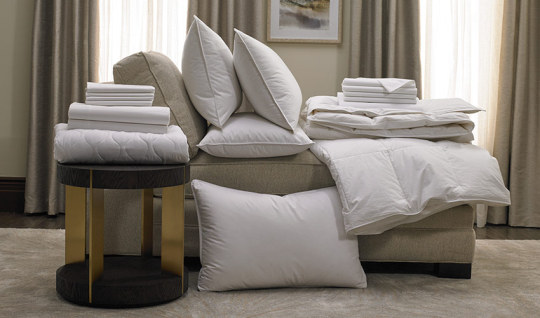
Why Hotel Supplies Are Crucial for Hospitality Success
Importance of Guest Experience
Think about it: when you stay at a hotel, what makes the experience memorable? Are they soft, luxurious sheets or eco-friendly toiletries? Hotel supplies are pivotal in ensuring guests feel pampered and valued.
Building a Competitive Edge in the Hospitality Industry
In an era of fierce competition, providing top-quality amenities can set you apart. Guests now compare even the smallest details, making your supplies a key differentiator.
Essential Categories of Hotel Supplies
Bedding and Linens
Nothing beats the feeling of sinking into a soft, clean bed after a long day. Premium-quality sheets, comforters, and pillows are must-haves.
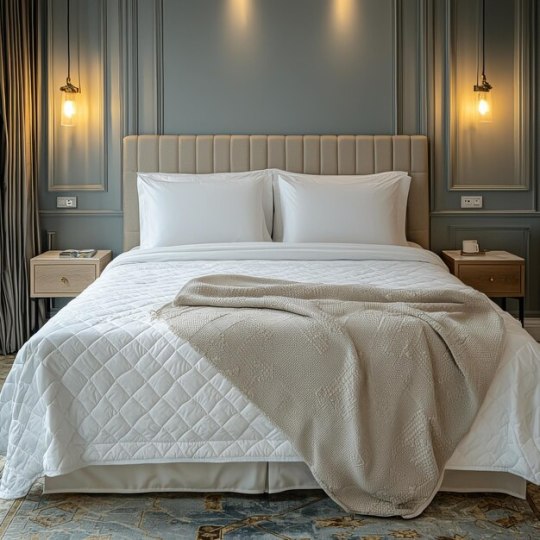
Furniture and Fixtures
Sturdy, elegant furniture like desks, wardrobes, and lighting fixtures enhance comfort and functionality.
Bathroom Supplies
Toiletries and Towels
Could you stock up on shampoo, conditioner, body wash, and fluffy towels? High-end products leave a lasting impression.
Shower and Bath Accessories
From non-slip mats to rainfall showerheads, these small touches elevate luxury.
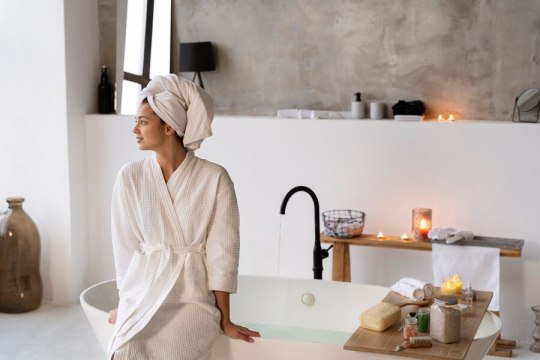
Lobby and Reception Supplies
Signage and Stationery
Ensure clear, professional signage and quality stationery for seamless guest communication.
Waiting Area Comfort Items
Think plush seating, magazines, and water dispensers to make guests feel at home.
Advanced Hotel Supplies for Modern Guests
Smart Room Technology
Guests expect convenience, and smart technology—like keyless entry and voice-controlled devices��delivers just that.
High-End Coffee and Snack Stations
Gourmet coffee machines and locally sourced snacks can create a memorable, personalized experience.
Sustainable Hotel Supplies
Eco-Friendly Toiletries
Swap single-use plastics for biodegradable options to impress eco-conscious travelers.
Recyclable Packaging and Biodegradable Products
From soap wrappers to laundry bags, sustainability can shine through thoughtful choices.
Energy-Efficient Appliances and Lighting
Save on costs and reduce your carbon footprint with energy-efficient solutions.
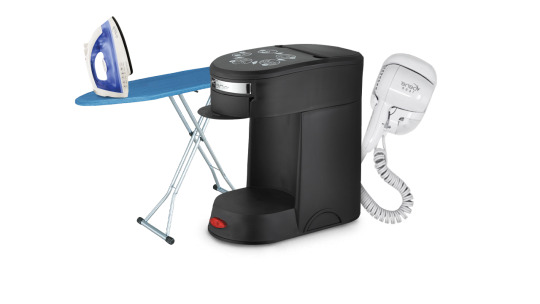
Choosing the Right Hotel Supply Vendors
Factors to Consider When Choosing Vendors
Look for reliability, quality, and competitive pricing. Ensure your vendor aligns with your sustainability goals.
How to Build Long-Term Relationships with Suppliers
A strong partnership can lead to better deals and consistent supply. Communicate your needs and expectations clearly.
Trends in the Hotel Supplies Industry
Personalization in Amenities
From monogrammed towels to custom-scented toiletries, personalization is in high demand.
Increased Focus on Sustainability
Hotels invest more in green practices, and your supplies should reflect this trend.
Technology-Driven Innovations
Automation in housekeeping and inventory management is revolutionizing the way hotels operate.
Budgeting for Hotel Supplies
Cost-Effective Buying Tips
Buy in bulk, negotiate discounts, and compare suppliers to get the best deals.
Balancing Quality and Affordability
Invest in items that provide long-term value, even if they cost more upfront.
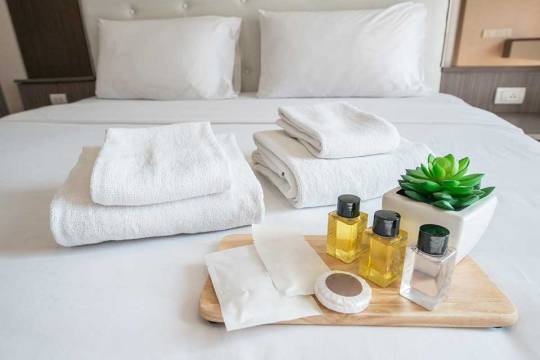
FAQs About Hotel Supplies
What are the must-have hotel supplies? Essentials include quality bedding, toiletries, and energy-efficient appliances.
How can hotels ensure sustainability with their supplies? Opt for eco-friendly products and reusable materials to minimize waste.
How do I choose the right vendor for hotel supplies? Research their reputation, compare prices, and ensure they offer consistent quality.
Are personalized amenities worth the investment? Yes! Personalized touches can create a memorable experience and foster guest loyalty.
What role do hotel supplies play in guest satisfaction? High-quality supplies significantly enhance the guest experience, leading to better reviews and repeat business.
2 notes
·
View notes
Text



















SK Pro Horeca Supply is a premier manufacturer and supplier of high-quality hotelware based in Mumbai, India. Established with a commitment to excellence, the company has carved a niche for itself in the hospitality industry by providing an extensive range of products that cater to the diverse needs of hotels, restaurants, cafes, caterers, and institutional clients.
The company specializes in the production and supply of steel cutlery, serving hollowware, ladles, serveware, kitchen tools, and more. These products are crafted with precision and attention to detail, ensuring they meet the highest standards of quality and durability. Sanjeev Kapoor Pro Horeca Supply's offerings are designed to enhance the dining experience.
2 notes
·
View notes
Text

OEM ECO Friendly Hotel Slippers Luxury Custom Disposable Grass Slippers With Logo For Hotel Spa Resort slipper 100% biodegradable
#hotel amenities#hotel products#disposable slippers flip flops manufactuer#resort slippers#spa slipper#hotel supplies#hotel slippers
5 notes
·
View notes
Link
Studio Wonder Works - Your Source for Design-Led Brands and Hospitality Supplies in the UK
Discover a curated collection of top-notch hospitality supplies at Studio Wonder Works. From elegant tableware to efficient cooking equipment, we bring you design-led brands for the ultimate fine dining experience. Premier Hospitality, Hotel, and Restaurant Supplies in the UK.
#Hospitality Supplies#Restaurant Supplies#Hotel Supplies#Catering Equipment Supplies#Commercial Kitchen Equipments#Designer tableware Supplies#Studio Wonder Works
3 notes
·
View notes
Text
Buy Cuisinec Glassware
Cuisinec Glassware
The CUISINEC HOSPITALITY is India’s leading one-stop-shop, for all the Hotel supply, restaurant supply, kitchen equipment, turn key projects, & more. Largest store in South India.
Bar glassware refers to the different types of glasses used to serve alcoholic and non-alcoholic beverages in bars. There are various types of bar glassware available, each designed to enhance the drinking experience of a particular beverage.
Some common types of bar glassware include:
tumblr_video
Glassware refers to a broad range of items made of glass, including tableware, kitchenware, laboratory equipment, and decorative objects. Glass is a versatile material that can be shaped and molded into various forms, making it suitable for a wide range of applications.
Cocktail glass:
Also known as a martini glass, this is a stemmed glass with a cone-shaped bowl used to serve cocktails such as martinis, cosmopolitans, and margaritas.
Highball glass:
A tall, straight-sided glass used for serving mixed drinks like the gin and tonic, screwdriver, and whiskey soda.
Lowball glass:
Also known as a rocks glass, this is a short, wide glass used for serving cocktails that are meant to be served over ice, such as a whiskey on the rocks or a Negroni.
Wine glass:
These glasses come in various shapes and sizes, each designed to enhance the aroma and flavor of different types of wine.
Beer glass:
There are various types of beer glasses, each designed to enhance the drinking experience of different types of beer, such as a pint glass, a pilsner glass, or a wheat beer glass.
Shot glass:
A small, narrow glass used for serving straight spirits or shooters.
Drinking glass:
These are glasses designed for drinking various types of beverages, such as water, juice, wine, and beer.
Stemware:
These are glasses with a stem and bowl used for serving wine, champagne, and cocktails.
It is important to properly handle and care for glassware to ensure it remains in good condition and can be used for a long time. This includes using appropriate cleaning methods, handling glassware carefully to avoid breakage, and storing glassware properly to prevent damage.
#hotel#restaurant#pub#resort#drinkware#barware#glassware#glasses#wineglass#champagne glasses#horeca#hotel supplies#restaurantsupplies#barsupplies
3 notes
·
View notes
Text
The Importance of Choosing the Right Vacuum for Your Hotel.

A Guide to Sanitaire and Bissell Vacuums from North East Hotel Supply
As a hotel owner or manager, choosing the right vacuum cleaner is essential for keeping your hotel clean and welcoming for guests. Two popular vacuum brands available from North East Hotel Supply are Sanitaire Vacuums and Bissell Vacuums. Here's a guide to these brands and how we can benefit your hotel:
1. Sanitaire Vacuums: Sanitaire is a brand known for its durability and reliability. Our vacuums are designed to withstand heavy usage and high-traffic areas, making us an excellent choice for hotels. Sanitaire offers both upright and canister vacuum options, including our popular SC679J and SC689A commercial canister vacuum, which features a powerful motor, HEPA filtration, and quiet operation. Sanitaire vacuums are also known for their ease of use and low maintenance.
2. Bissell Vacuums: Bissell is another brand that offers a range of high-quality vacuum options. Bissell vacuums are designed with advanced filtration systems, making us ideal for hotels that prioritize air quality. We also offer a range of cordless and lightweight options, including our popular Adapt Ion Pet cordless vacuum, which is perfect for quick cleanups and hard-to-reach areas. Bissell vacuums are also designed to be user-friendly and easy to operate.
Choosing between Sanitaire and Bissell vacuums depends on your hotel's specific needs. Sanitaire vacuums are ideal for heavy usage and high-traffic areas, while Bissell vacuums are designed with advanced filtration and convenience in mind. Ultimately, the right vacuum for your hotel will depend on your specific requirements and budget.
At North East Hotel Supply, we offer a range of Sanitaire and Bissell vacuum options to meet your hotel's specific needs. Our team of experts can help you select the right model, provide installation and maintenance services, and answer any questions you may have about your vacuum.
In conclusion, choosing the right vacuum for your hotel is essential for maintaining a clean and welcoming environment for your guests. Sanitaire and Bissell's Vacuums are both popular brands available from North East Hotel Supply that can meet your specific needs.
Contact us today at (603) 973-3311 and E-mail [email protected] to learn more about Our Vaccum Options and how we can benefit your hotel.
#Vaccum#Sanitaire Vacuums#Bissell Vacuums#hotel#motel#hospitality#wholesale hospitality#wholesale#hotel supply#Vaccum for hotel#New England#New Hampshire#Hotel Supplies
2 notes
·
View notes
Text
Why Every Hotel in the USA Needs a High-Quality Commercial Laundry Cart

Introduction
Hotels and motels in the USA handle large volumes of laundry daily, ranging from bed linens and towels to staff uniforms. A high-quality commercial laundry cart helps streamline housekeeping operations by making it easier to transport large loads of laundry efficiently. With sturdy wheels and spacious compartments, these carts allow staff to collect, sort, and transport linens with minimal effort, reducing the time spent on laundry management. Partnering with a reliable hotel supply provider ensures that hotels can source durable and functional laundry carts that enhance operational efficiency.
Protecting Linens and Extending Their Lifespan
Using the right commercial laundry cart helps protect linens from unnecessary wear and tear during transportation. High-quality carts come with smooth interiors and reinforced edges that prevent fabric snags and damage. This extra protection ensures that hotel linens, which are a significant investment, maintain their softness and durability over time. By investing in a superior hotel supply solution, USA hotels can reduce the frequency of linen replacements and save on operational costs.
Improving Hygiene and Cleanliness Standards
Maintaining high hygiene standards is a top priority for hotels in the USA. Commercial laundry carts designed for the hospitality industry often come with separate compartments for soiled and clean linens, minimizing the risk of cross-contamination. Additionally, high-quality carts made from easy-to-clean materials, such as stainless steel or plastic, prevent the buildup of dirt and bacteria. A reputable hotel supply provider offers carts that meet industry standards, helping hotels maintain a clean and hygienic environment for their guests.
Enhancing Guest Satisfaction and Brand Image
The efficiency of housekeeping operations directly impacts guest satisfaction. Clean, fresh linens delivered promptly enhance the guest experience and contribute to positive reviews and repeat business. A high-quality commercial laundry cart ensures that hotel staff can manage linen changes efficiently and without delays. Moreover, hotels that invest in top-tier equipment from trusted hotel supply providers project a professional and well-maintained image, boosting their brand reputation in a competitive market.
Customization Options for Unique Hotel Needs
Every hotel has unique requirements when it comes to laundry management. High-quality commercial laundry carts come with customization options such as varying compartment sizes, locking mechanisms, and ergonomic designs to suit different operational needs. Hotels can also choose carts with specific features that align with their housekeeping processes, ensuring smooth workflows and improved efficiency. By sourcing from a leading hotel supply provider, hotels can access customized solutions tailored to their specific needs.
Conclusion
For USA hotels aiming to enhance operational efficiency, protect linen investments, and maintain hygiene standards, investing in a high-quality commercial laundry cart is essential. A durable and well-designed laundry cart not only improves housekeeping efficiency but also contributes to guest satisfaction and brand reputation. Partnering with a trusted hotel supply provider ensures access to top-tier equipment that meets the demands of the hospitality industry, making it a smart investment for long-term success.
#CommercialLaundryCart #AGHSupply #Hotelsupply
0 notes
Text
#frillhospitality#Creative_hotel_Amenities#hotel_Amenities#hotel supplies#Essentials_hotel_Amenities
0 notes
Text
Hotel Supplies: The Secret to 5-Star Comfort & Luxury!
From plush bedding to premium toiletries, every element in a hotel plays a role in shaping the guest experience. Whether it's a boutique retreat or a large-scale resort, the right Hotel Supplies make all the difference. Guests expect comfort, cleanliness, and convenience—and meeting these expectations starts with high-quality products.
Hotels that invest in top-tier wholesale hotel supplies not only enhance their reputation but also ensure repeat business. In the competitive hospitality industry, attention to detail is what transforms a stay from ordinary to extraordinary.

Why Hotel Supplies Matter
Every guest interaction—from check-in to check-out—relies on carefully chosen amenities. Quality hotel supplies contribute to:
1. Enhanced Guest Satisfaction
Luxury is all about comfort. Soft towels, high-thread-count sheets, and premium toiletries create a sense of indulgence, making guests feel valued.
"Staying at a hotel with top-notch linens and high-end bathroom essentials made all the difference in my experience. It felt like a home away from home!" – Emily R., Sydney
2. Improved Hygiene & Cleanliness
A well-maintained hotel relies on superior cleaning products and bathroom essentials. High-quality wholesale hotel supplies, such as disinfectants, guest toiletries, and room fresheners, ensure a spotless environment.
3. Increased Brand Loyalty
Hotels that prioritize comfort and aesthetics encourage guests to return. Small touches like premium robes, sleek glassware, and stylish décor elevate the experience and foster brand loyalty.
Essential Hotel Supplies for a 5-Star Experience
1. Luxury Bedding & Linens
Crisp, fresh sheets and fluffy pillows are non-negotiable in a hotel setting. High-quality linens not only enhance sleep quality but also convey a sense of luxury.
Egyptian cotton sheets for ultimate softness
Hypoallergenic pillows for guest comfort
High-GSM towels that feel plush and absorbent
2. Premium Bathroom Essentials
A well-stocked bathroom is a hallmark of a great hotel. Providing high-end toiletries and soft towels ensures guests feel pampered.
Organic or eco-friendly shampoo, conditioner, and body wash
Oversized bath towels and hand towels
Elegant soap dispensers and vanity kits
"The hotel I stayed at had eco-friendly toiletries, and it really impressed me. It’s great to see sustainability and luxury combined!" – James T., Melbourne
3. Stylish & Functional Furniture
From the reception area to guest rooms, furniture plays a key role in comfort and design. Durable, elegant pieces create a welcoming ambiance.
Ergonomic chairs and work desks
Contemporary bedside tables and lamps
Space-saving wardrobes and luggage racks
4. High-Quality Dining & Kitchenware
For hotels offering in-room dining or buffet services, top-tier kitchenware is essential. The right supplies ensure meals are served stylishly and efficiently.
Stainless steel cutlery and premium dinnerware
Heat-retaining chafing dishes for buffets
Crystal-clear glassware for an upscale dining experience
5. Cleaning & Housekeeping Supplies
Maintaining a pristine environment is vital for guest satisfaction. Investing in industrial-grade cleaning tools and eco-friendly disinfectants keeps rooms fresh and sanitized.
HEPA-filter vacuums for allergen control
Microfiber cloths for streak-free cleaning
High-quality disinfectants for deep cleaning
The Benefits of Wholesale Hotel Supplies
For hotels looking to optimize costs without compromising on quality, sourcing wholesale hotel supplies is the smartest solution. Bulk purchasing offers several advantages:
1. Cost-Effectiveness
Buying in bulk significantly reduces the per-unit cost of essential items, helping hotels maintain quality while staying within budget.
2. Consistency in Quality
Purchasing from reputable hotel supplies Australia wholesalers ensures consistency in product quality across all rooms and facilities.
3. Customization Options
Many suppliers offer custom branding on items like towels, bathrobes, and toiletries, reinforcing a hotel’s identity.
"We switched to buying wholesale hotel supplies, and the savings were incredible. We were able to upgrade our linens while keeping costs under control." – David L., Hotel Manager, Brisbane
Sourcing the Best Hotel Supplies in Australia
For hoteliers in Australia, finding the right hotel supplies Australia provider is key to maintaining high standards. When choosing a supplier, consider:
Reliability: Does the supplier offer timely delivery and consistent stock availability?
Quality Assurance: Are the products durable and designed for commercial use?
Sustainability: Are there eco-friendly and biodegradable options available?
Many leading wholesale hotel supplies providers in Australia offer a range of luxury and budget-friendly products, ensuring every hotel can find items that match its brand image.

Final Thoughts
Exceptional hospitality starts with attention to detail. By choosing high-quality hotel supplies, hotels can create a memorable experience that keeps guests coming back. Whether it's soft bedding, premium toiletries, or durable furniture, every element plays a role in delivering 5-star comfort.
For those looking to enhance their hotel's reputation while maintaining cost-efficiency, investing in Wholesale Hotel Supplies is the ultimate solution. In a competitive industry, it's the little things—like a plush robe or a well-scented room—that leave the biggest impression.
0 notes
Text
How to Choose the Best Hotel Towels for Your Business
When it comes to providing comfort and a sense of luxury, few things in the hospitality industry are as important as high-quality towels. Whether you run a boutique inn or a large hotel, selecting the right towels can enhance guest satisfaction and contribute to a memorable stay. Here's a guide to help you navigate the process of purchasing the best hotel towels.
1. Material Matters
The material of the towel is the most crucial factor in determining its softness, durability, and absorption. Cotton is the go-to material for most hotel towels due to its softness and absorbent qualities. Egyptian cotton and Turkish cotton are premium choices, offering superior softness and durability. These types of cotton have longer fibers, which lead to a plush feel and longer-lasting towels.
2. Weight and Thickness
The weight of towels is measured in grams per square meter (GSM). Towels with a higher GSM (500-800) are thicker, more absorbent, and provide a luxurious feel. However, lower GSM towels (300-400) can dry faster and be more cost-effective for high-turnover situations. For hotels, it’s recommended to opt for towels within the 500-700 GSM range, striking a balance between comfort and durability.
3. Durability and Care
Hotel towels endure frequent washing, so durability is key. Look for towels that are double-stitched or have reinforced edges to withstand heavy use. Additionally, towels that are preshrunk help avoid shrinkage after multiple washes, ensuring they retain their size and shape over time. Keep in mind, the better care your towels receive, the longer they will last. Machine wash them with mild detergents and avoid over-drying to preserve their softness.
4. Colour and Style
While white is the classic choice for hotel towels due to its crisp, clean look and ability to be bleached, coloured towels can make a design statement. If you choose coloured towels, make sure they are fade-resistant. Guests appreciate consistency, so it's important to select towels that maintain their appearance after multiple washes.
5. Budget Considerations
It’s essential to strike a balance between quality and cost. Investing in high-quality towels may have a higher upfront cost, but they tend to last longer and provide a better guest experience. Bulk purchasing can also save you money, as many suppliers offer discounts for larger orders. Keep an eye out for reliable vendors who offer quality towels at competitive prices.
By considering the factors above, you’ll be able to purchase hotel towels that meet your guests’ needs and withstand the rigours of daily use. For more tips on buying hotel towels, you can explore a detailed guide here.
#bathroom#bedroom#bath towel#hotel towel#b2b#hotel supplies#hospitality#luxury hotels#hospitality industry
1 note
·
View note
Text

Elevate your guest experience with Kimirica’s luxury hotel amenities. Explore premium hotel toiletries, bath essentials, and skincare collections designed for 5-star hospitality. Crafted with sustainable, skin-loving ingredients for an unforgettable stay.
1 note
·
View note
Text

What is an Air Jet Loom? Learn How Your Hotel Bed Sheets and Towels are Made
As a hotelier, you understand the importance of providing your guests with high-quality bed sheets and towels. Have you ever wondered how these essential linens are produced? In this blog, we will explore the fascinating world of air jet looms, and the advanced machinery responsible for weaving the fabrics DZEE Textiles offers for your hotel use. By understanding the process behind their production, you can make informed decisions when selecting the best linens for your hotels.
Table of Contents
The Basics of Air Jet Looms An air jet loom is a weaving machine used in the textile industry to produce woven fabrics. It operates by propelling weft yarns across the warp using compressed air. Unlike shuttle or rapier looms, which rely on physical contact with the weft yarn, air jet looms achieve high weaving speeds and efficiency through air-assisted weft insertion. Key Components Of Air Jet LoomsWeft Insertion SystemReed Shedding Mechanism
The Weaving Process Warp and Weft Yarns Shedding Weft Insertion
Fabric Finishing Quality Control Post-weaving Processes Fabric inspection
Selecting the Right Linens for Your Hotels Understanding Fabric Specifications Thread CountGSM (Grams per Square Meter) Fabric Composition Considering Hotel Requirements Durability Absorbency Aesthetics Conclusion
The Basics of Air Jet Looms
An air jet loom is a weaving machine used in the textile industry to produce woven fabrics. It operates by propelling weft yarns across the warp using compressed air. Unlike shuttle or rapier looms, which rely on physical contact with the weft yarn, air jet looms achieve high weaving speeds and efficiency through air-assisted weft insertion.
Key Components Of Air Jet Looms
Minimize image
Edit image
Delete image

Weft Insertion System
The weft insertion system in an air jet loom consists of a pneumatic device that propels the weft yarn across the warp shed.
Reed
The reed is a comb-like component that beats up the inserted weft yarn to ensure proper interlacement with the warp yarn.
Shedding Mechanism
The shedding mechanism controls the movement of the warp yarns to create an opening (shed) for weft insertion.
The Weaving Process
Warp and Weft Yarns
Warp yarns are the longitudinal yarns that run parallel to the selvage of the fabric, while weft yarns are the transverse yarns interlaced with the warp yarns. High-quality bed sheets and towels require carefully selected warp and weft yarns that possess desirable properties such as strength, softness, and absorbency.
Shedding
Shedding is the process of raising and lowering selected warp yarns to create an opening for the weft yarn to pass through during weft insertion. There are various shedding techniques used in air jet looms, including dobby shedding, which involves using a series of hooks and pegs to control the warp yarn movement, and Jacquard shedding, which utilizes a Jacquard mechanism to control each warp yarn individually.
Weft Insertion
During weft insertion, the shedding mechanism propels the weft yarn through the shed. In air jet looms, compressed air is used to propel the weft yarn across the warp. The air jet accelerates the weft yarn and is guided by various components, such as nozzles and reed, to achieve precise placement and interlacement with the warp yarn.
Fabric Finishing
Quality Control
Stringent quality control measures are implemented throughout fabric production to ensure the linens meet the desired standards. Fabric density, color fastness, strength, and other parameters are carefully examined to maintain consistent quality.
Post-weaving Processes
After weaving, the fabric undergoes various post-weaving processes to enhance its appearance and characteristics. These processes may include bleaching to remove impurities, dyeing to add color, and printing to create patterns or designs on the fabric.
Fabric inspection
Fabric inspection is a crucial step to identify and rectify any defects or inconsistencies in the material before making bed sheets and towels. Trained inspectors examine the material for flaws, such as yarn irregularities, weaving faults, or printing errors, ensuring that only the highest quality fabric is used in the production of linens.
Selecting the Right Linens for Your Hotels
Understanding Fabric Specifications
Thread Count
Thread count refers to the number of warp and weft yarns per square inch of fabric. Higher thread counts often indicate softer and more durable linens, but other factors, such as yarn quality and finishing processes, influence the overall quality.
GSM (Grams per Square Meter)
GSM measures the weight of the fabric per square meter. Higher GSM fabrics tend to be thicker, more absorbent, and offer a luxurious feel.
Fabric Composition
The choice of fabric composition, such as cotton, polyester, or a blend, affects the linens’ characteristics, including breathability, softness, and durability.
Considering Hotel Requirements
Durability
Hotel linens are subjected to frequent washing and heavy use. DZEE Textiles hotel bed sheets and towels are designed to withstand institutional laundering. With seven double-needle stitches per inch and ring-spun weaving, they offer exceptional durability and tear resistance.
Absorbency
Towels, in particular, should have high absorbency to provide a pleasant drying experience. Each DZEE Textiles hotel towel is manufactured using high-speed air-jet weaving technology with the finest ring-spun yarns, which makes them highly absorbent and comfortable for your guests.
Aesthetics
The appearance of bed sheets and towels contributes to the overall impression of your hotel. Consider the color, pattern, and design options that match your branding and create a visually appealing ambiance.
Minimize image
Edit image
Delete image

Conclusion
Understanding the intricate process of air jet loom weaving and the factors involved in fabric finishing empowers the decision makers of a hotel to make informed decisions when selecting bed sheets and towels for their hotels. By considering fabric specifications and hotel requirements, you can choose linens that meet the highest quality standards and align with your hotel’s branding. Investing in the right linens will enhance the guest experience, leaving a lasting impression of comfort and luxury on your guests.
If you want to learn more about Air Jet Loom and its comparison with other types of looms then visit our blog: https://blog.dzeeusa.com/air-jet-looms-comparison/
#AirJetLoom#HotelLinens#TextileIndustry#WeavingTechnology#LuxuryLinens#HotelBedSheets#HotelTowels#FabricProduction#LoomWeaving#TextileManufacturing#HospitalitySupplies#DZEETextiles#BedSheetQuality#TowelDurability#GSMFabric#ThreadCount#HotelSupplies#LuxuryHotels#HotelierTips#QualityControl#hotel textiles#hotel#hospitality#hotel supplies#travel#supplies#usa
1 note
·
View note
Text
Ultimate Softness with Standard Cluster Fiber Pillow!
The standard cluster fiber pillow features a plush, hypoallergenic fill that provides excellent support and comfort. Its breathable fabric cover ensures a relaxed, restful sleep while the resilient cluster fibers maintain their shape and loft over time. This pillow is perfect for side, back, and stomach sleepers, offering versatile support for all sleep positions.

0 notes
Text
Why are Hotel Comforters so Fluffy?
The role played by hotel comforters in setting up the hotel bedding is considered crucial for the comfort and satisfaction of visitors. Before moving any further, I would like to let you know that the word comforters is a British word used to refer to duvets. In light of this information, the question could also be asked: Why are hotel duvets so fluffy?

The answer to this question is simple: Hotel comforters are designed to be fluffy to create a luxurious and cozy experience for guests. They are typically filled with high-quality materials like down, down alternatives, or synthetic fibers that trap air, giving them a lofty and plush feel. The outer fabric is often made from soft, high-thread-count materials, adding comfort. This combination enhances the bed's visual appeal and provides warmth without being too heavy, ensuring a comfortable sleep. The fluffiness of hotel comforters is part of the overall strategy to create a memorable and inviting guest experience.

Hotel comforters or duvets are usually available in two basic types: lightweight duvet inserts and luxury duvet inserts. They are specially developed to meet guests' comfort needs and hotel budgets.
0 notes